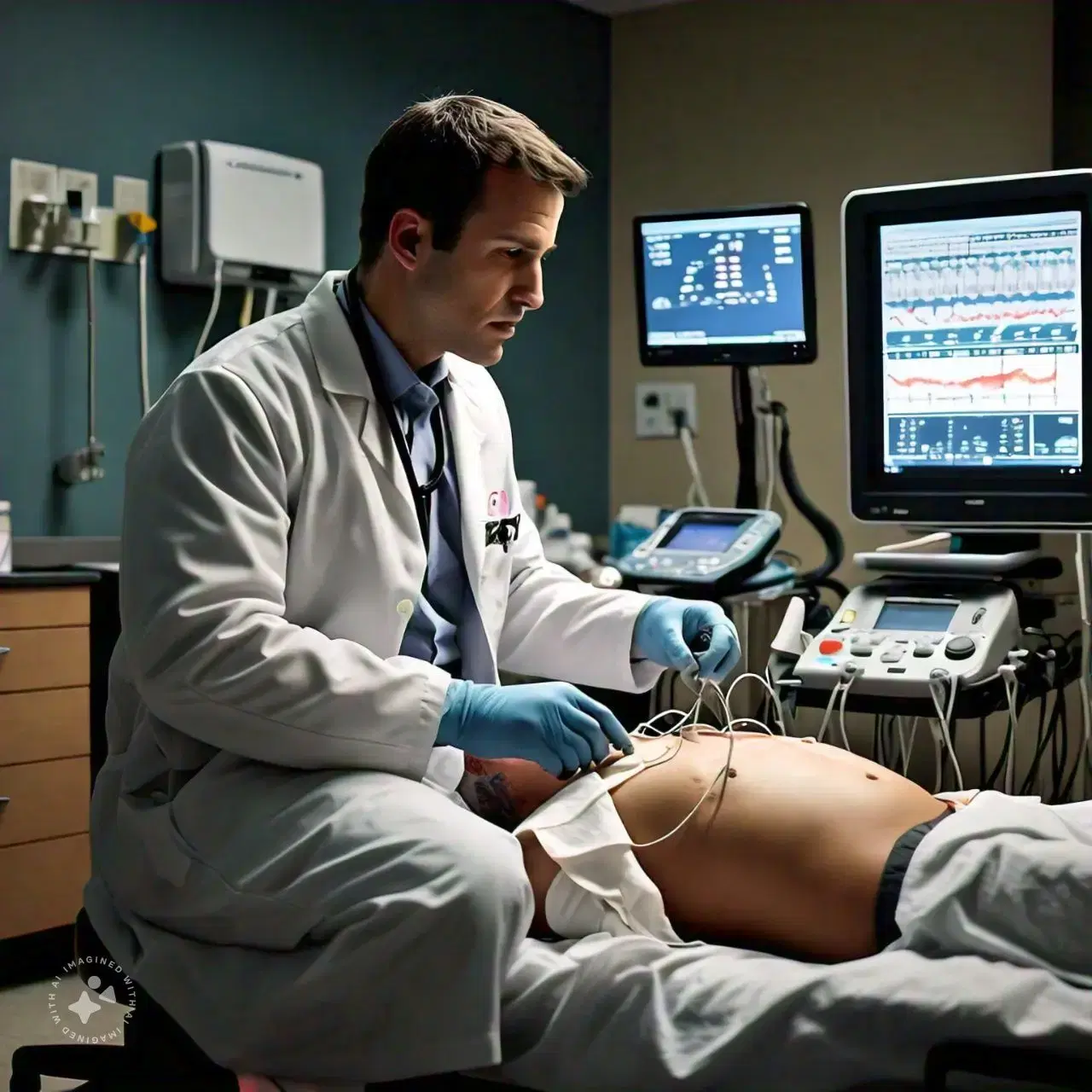
Electrogastrography (EGG): Assessing the Electrical Activity of the Stomach
When you think of diagnostic tests for the stomach, you might imagine invasive procedures, but Electrogastrography (EGG) is here to change that perception. This non-invasive diagnostic procedure is gaining traction in the medical field for its ability to assess gastric motility disorders like gastroparesis and functional dyspepsia. By recording the stomach’s electrical activity, EGG helps healthcare providers understand what’s happening in your digestive system without the need for more invasive methods. Let’s dive into what EGG is, how it works, and why it’s becoming an essential tool in gastroenterology.
What is Electrogastrography (EGG)?
Electrogastrography (EGG) is a non-invasive procedure that records the electrical activity of the stomach muscles. Think of it as an ECG for your stomach! This procedure involves placing electrodes on the skin over the stomach to detect the myoelectrical signals generated by smooth muscle contractions. The primary role of EGG is to help diagnose conditions related to abnormal stomach motility, such as gastroparesis—a condition where the stomach empties too slowly, and functional dyspepsia, which is characterized by chronic indigestion.
In simpler terms, if your stomach isn’t churning the way it should, EGG can provide the clues your doctor needs to pinpoint the issue.
The Electrogastrography Procedure
How EGG is Performed
The EGG procedure is straightforward and, importantly, painless. You’ll be asked to lie down, and small electrodes will be placed on your abdomen. These electrodes pick up the electrical signals from your stomach muscles over a period of time, typically between 1 to 2 hours. Unlike some other medical tests, EGG doesn’t require sedation.
The non-invasive nature of EGG is one of its biggest advantages. It’s a simple, outpatient procedure that doesn’t disrupt your day.
Benefits of EGG
One of the key benefits of EGG is its ability to provide valuable insights into the rhythmic electrical activity of your stomach. This information is crucial for diagnosing gastric motility disorders, which can be elusive and hard to diagnose with other methods. Additionally, because it’s non-invasive, the procedure is safe and can be repeated as necessary without risk to the patient.
Applications and Indications of Electrogastrography
Diagnosing Gastroparesis
Gastroparesis, a condition where the stomach empties slowly, can cause a range of uncomfortable symptoms like nausea, vomiting, and bloating. EGG plays a crucial role in diagnosing this condition by identifying abnormal patterns in the stomach’s electrical activity. This information helps doctors tailor treatment plans to manage the symptoms and improve the patient’s quality of life.
Evaluating Functional Dyspepsia
Functional dyspepsia is another common digestive disorder, especially prevalent in India, where it affects a significant portion of the population. EGG is instrumental in assessing this condition, which is often marked by chronic indigestion and discomfort in the upper abdomen. By analysing the stomach’s electrical patterns, EGG helps in identifying the root cause of these persistent symptoms.
Post-Surgical Evaluation
EGG isn’t just useful for diagnosing pre-existing conditions; it’s also valuable in evaluating gastric motility after surgery. For patients who have undergone gastric surgery, EGG can help assess how well the stomach is functioning post-operation, ensuring that any complications are detected early.
Gastric motility disorders like functional dyspepsia and gastroparesis are not uncommon in India. Studies indicate that functional dyspepsia affects about 10-20% of the Indian population—a significant number given the country’s vast population. Although specific statistics on the use of EGG in India are limited, its application is steadily increasing in major hospitals and gastroenterology centres across the country, including Bangalore Gastro Centre.
Considerations and Limitations
Who Should Avoid EGG?
While EGG is a versatile tool, it’s not suitable for everyone. Patients with severe obesity or significant abdominal scarring may find that these factors interfere with electrode placement and signal detection, reducing the accuracy of the test. It’s important to discuss your medical history with your healthcare provider to determine if EGG is the right diagnostic tool for you.
Read more: Exploring the Relationship Between Gut Health and Autoimmune Diseases.
Factors Affecting Accuracy
Accuracy is critical in any diagnostic test, and EGG is no exception. Factors like improper electrode placement, patient movement during the test, and even interference from other electrical signals in the body can impact the results. To ensure the most accurate readings, it’s essential that the procedure is conducted under the right conditions.
In gastroenterology centres like Bangalore Gastro Centre, EGG is becoming an integral part of diagnosing and managing gastric motility disorders. By providing detailed insights into the stomach’s electrical activity, EGG complements other diagnostic tools and enhances patient care. While EGG is not a one-size-fits-all solution, it offers a valuable non-invasive option for many patients dealing with complex gastric issues.
Conclusion
Electrogastrography (EGG) is a powerful, non-invasive diagnostic tool that is playing an increasingly important role in understanding and managing gastric motility disorders. Whether you’re experiencing persistent nausea, bloating, or indigestion, EGG might just be the key to unlocking the mystery behind your symptoms. As with any medical procedure, it’s important to consult with a healthcare professional to determine if EGG is the right choice for you. If you’re dealing with unexplained stomach issues, don’t hesitate to seek medical advice—early diagnosis and treatment can make all the difference.
